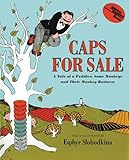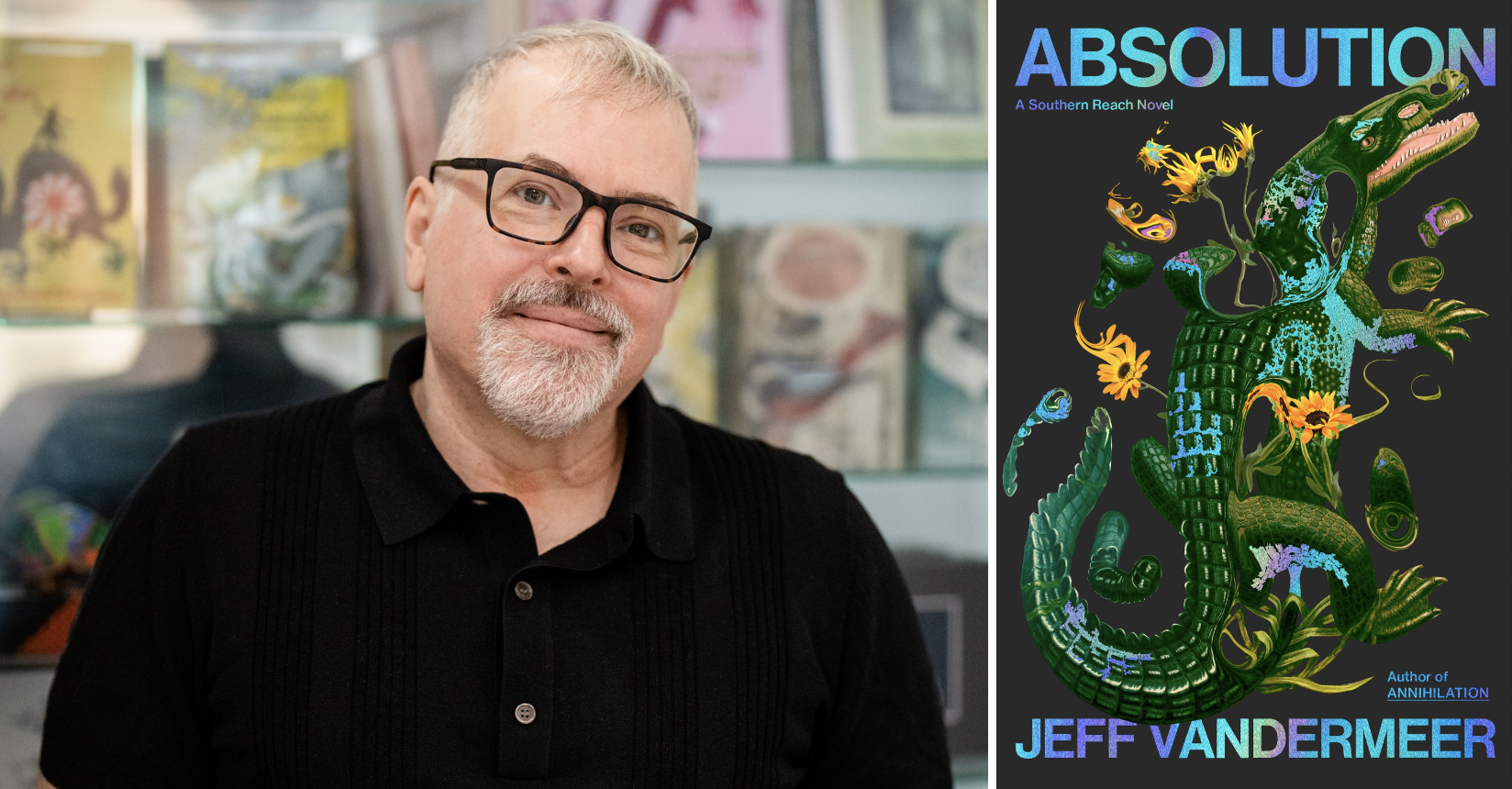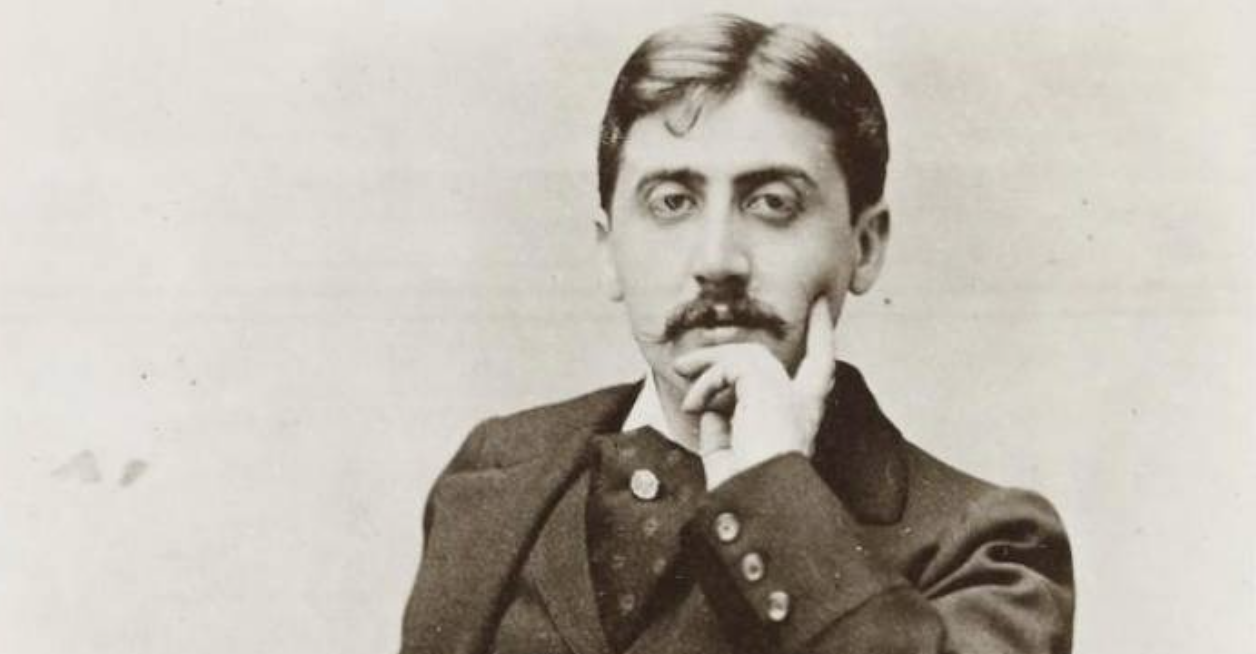My son Conor is fourteen months old, and my wife and I, like all new parents, marvel at his growth: he’s gone from a screaming little yam to a genuine person, with his own catalog of gestures, habits, and idiosyncrasies. Playtime is no longer a one-sided affair: we roll a ball back and forth, chase each other around, whack at a toy guitar. When exhaustion creeps in, we choose a book from his growing kiddie library; Conor sits rapt for a few seconds as we read, then crawls off to wreck something.
Aside from the trenchant Chicka Chicka Boom Boom, which I’d never before heard of, I tend to choose books that I remember loving: Caps For Sale, Ferdinand, anything with Curious George. And while Conor is off in the corner, headbutting the cat or tearing up a magazine, I keep reading, as much for myself as for him. One would think it a pleasure to return to one’s childhood favorites—and for a few nostalgia-stirring pages, it is. But as an adult, having developed the keen critical powers of a precocious kindergartner, I can’t help but find fault with nearly everything on his shelf. What I previously considered whimsical trifles now reveal themselves as other things entirely: thinly-veiled endorsements of chaos, malfeasance, naïveté. Here are five of the most flagrant offenders:
Caps For Sale by Esphyr Slobodkina
 Caps For Sale tells the story of a Russian peddler whose entire stock of pageboy caps is stolen by a troop of insouciant monkeys. The man shakes his fists, making impotent demands (“You must give me back my caps!”) as the thieves grin down from their tree, taunting his frantic need. (“Tsz, tsz, tsz!”) They seem to know that they control him, can gut him as cleanly as Maggiorani in The Bicycle Thief. Ultimately, however, they lose their nerve and fling down the caps—and while this brings the incident to a close, it’s where the real trouble begins. The peddler balances his wares upon his head and returns to town, eager to unload caps that were just worn by monkeys. The steady spread of head lice and untold ape-mites throughout his drab little village seems a given: once again, craven business interests trump the health of unwitting consumers. He may have reclaimed his caps, but the peddler has lost his integrity—with his own neighbors paying a tragic price.
Caps For Sale tells the story of a Russian peddler whose entire stock of pageboy caps is stolen by a troop of insouciant monkeys. The man shakes his fists, making impotent demands (“You must give me back my caps!”) as the thieves grin down from their tree, taunting his frantic need. (“Tsz, tsz, tsz!”) They seem to know that they control him, can gut him as cleanly as Maggiorani in The Bicycle Thief. Ultimately, however, they lose their nerve and fling down the caps—and while this brings the incident to a close, it’s where the real trouble begins. The peddler balances his wares upon his head and returns to town, eager to unload caps that were just worn by monkeys. The steady spread of head lice and untold ape-mites throughout his drab little village seems a given: once again, craven business interests trump the health of unwitting consumers. He may have reclaimed his caps, but the peddler has lost his integrity—with his own neighbors paying a tragic price.
Interestingly, it’s now widely believed that Outbreak, the 1995 Dustin Hoffman Ebola thriller, was at least partially inspired by Caps For Sale.
Horton Hears a Who! by Dr. Seuss
 In a 2000 New York Times Magazine essay, A.O. Scott called Horton Hears a Who! “a response to the atom bomb,” and the book, written in 1954, carries a warm dedication to a “Great Friend” from Japan. These days, however, Seuss’ tale reads as an invitation to stateside revolt: if the residents of Who-ville will only scream loudly enough, their Nool Jungle overlords will have no choice but to recognize them. The Who-hero, Jo-Jo, lives “in the Fairfax Apartments”—presumably not far from the Fairfax County, VA bases of DynCorp, General Dynamics, and the CIA. Is his initial “shirking” merely subterfuge as he works to destroy the system from within?
In a 2000 New York Times Magazine essay, A.O. Scott called Horton Hears a Who! “a response to the atom bomb,” and the book, written in 1954, carries a warm dedication to a “Great Friend” from Japan. These days, however, Seuss’ tale reads as an invitation to stateside revolt: if the residents of Who-ville will only scream loudly enough, their Nool Jungle overlords will have no choice but to recognize them. The Who-hero, Jo-Jo, lives “in the Fairfax Apartments”—presumably not far from the Fairfax County, VA bases of DynCorp, General Dynamics, and the CIA. Is his initial “shirking” merely subterfuge as he works to destroy the system from within?
While such brazen calls-to-arms might have energized me in my youth, I now know that in reality, the Wickersham Brothers would have co-opted the Whos’ rousing energy for political and marketing purposes, deflating their cause with poisonous efficiency. Their spirits crushed, the Whos would find themselves adrift near the bottom of the savage Nool hierarchy—their memories of Horton’s optimism haunting their dreams as they toss upon their pale orange thistle-tuft.
Blueberries For Sal by Robert McCloskey
 Blueberries For Sal follows a young girl and her mother as they pick blueberries, an activity that will allow them, somewhat disconcertingly, to “have food for winter.” (A sequel, Anemia For Sal, was rejected by Viking Press in 1951.) After a few pages of berry-picking antics, we learn that a hungry mother bear and her cub are on the opposite side of the hill. A storybook mix-up ensues, with Sal trailing the female bear and the cub following Sal’s mother. When the bear—and the woman—realize what’s happened, their reactions are bizarrely muted: “That is not my child”; “You are not little Sal.” And that’s that. Soon enough, each species is breezily reunited, with none of the lung-shredding gore that would ordinarily be expected.
Blueberries For Sal follows a young girl and her mother as they pick blueberries, an activity that will allow them, somewhat disconcertingly, to “have food for winter.” (A sequel, Anemia For Sal, was rejected by Viking Press in 1951.) After a few pages of berry-picking antics, we learn that a hungry mother bear and her cub are on the opposite side of the hill. A storybook mix-up ensues, with Sal trailing the female bear and the cub following Sal’s mother. When the bear—and the woman—realize what’s happened, their reactions are bizarrely muted: “That is not my child”; “You are not little Sal.” And that’s that. Soon enough, each species is breezily reunited, with none of the lung-shredding gore that would ordinarily be expected.
When I was in my early twenties, I went for a solo hike in Montana’s Glacier National Park. As the sun descended, I worked my way into well-marked grizzly country, but I shrugged off the danger: after all, what could go wrong? About a mile in, I was nearly attacked by a fully-grown black bear, coming terrifyingly close to becoming a wet pile of organs. Whenever I’ve told the story, and been asked why I acted so stupidly, I’ve always kind of shrugged. But now I know why: I had absorbed the deadly lessons of Blueberries For Sal. Thanks a lot, McCloskey.
Ferdinand by Munro Leaf
 I’m all for keeping kids as far away as possible from the world’s raging horror, but there’s a clear line between sensible protection and willful dubiousness—a line crossed in Blueberries For Sal, and again in Ferdinand. Ferdinand is a fey young bull who’d rather sit beneath a tree, listening to The xx, than scrap with his mates. It’s a nice portrait of youthful otherness, a bovine Freaks and Geeks. But after Ferdinand is carted to the Plaza de Toros—and he lazes in the center of the ring, too blithe to charge—he’s chauffered right back to his meadow, free to sniff the daisies and ponder Egon Schiele. I’ve been to a bullfight and seen what happens to those that survive the toreros: they’re dragged outside to have their throats slit. Perhaps Leaf could’ve avoided the bullfighting angle altogether, and simply jumped to the bulls’ 15-year high school reunion. There, his former peers, all of them now alcoholic financial advisers, mutter resentfully by the bar about Ferdinand’s thriving fruit-bouquet franchise.
I’m all for keeping kids as far away as possible from the world’s raging horror, but there’s a clear line between sensible protection and willful dubiousness—a line crossed in Blueberries For Sal, and again in Ferdinand. Ferdinand is a fey young bull who’d rather sit beneath a tree, listening to The xx, than scrap with his mates. It’s a nice portrait of youthful otherness, a bovine Freaks and Geeks. But after Ferdinand is carted to the Plaza de Toros—and he lazes in the center of the ring, too blithe to charge—he’s chauffered right back to his meadow, free to sniff the daisies and ponder Egon Schiele. I’ve been to a bullfight and seen what happens to those that survive the toreros: they’re dragged outside to have their throats slit. Perhaps Leaf could’ve avoided the bullfighting angle altogether, and simply jumped to the bulls’ 15-year high school reunion. There, his former peers, all of them now alcoholic financial advisers, mutter resentfully by the bar about Ferdinand’s thriving fruit-bouquet franchise.
Curious George Flies a Kite by Margret Rey
 I don’t have any philosophical argument against Curious George Flies a Kite. My complaint is more basic: the book is unrepentantly, almost diabolically, boring; it’s the sort of thing Jigsaw might read to his victims as they writhe in a maggoty pit. This is the first book I read to Conor, choosing it out of lazy brand loyalty, I suppose—because what’s more fun than Curious George? As it turns out, there are a few things: being jabbed in the armpit with a rusty sewing needle. Vomiting wing sauce into a concert-lot Port-a-John. Watching Elizabethtown with a corpse on your lap. I’d eagerly choose any of these before again entering the episodic, joy-killing world of that insipid little chimp. I’d try to explain the plot, but that would only make me exhale sadly and rest my head against the wall.
I don’t have any philosophical argument against Curious George Flies a Kite. My complaint is more basic: the book is unrepentantly, almost diabolically, boring; it’s the sort of thing Jigsaw might read to his victims as they writhe in a maggoty pit. This is the first book I read to Conor, choosing it out of lazy brand loyalty, I suppose—because what’s more fun than Curious George? As it turns out, there are a few things: being jabbed in the armpit with a rusty sewing needle. Vomiting wing sauce into a concert-lot Port-a-John. Watching Elizabethtown with a corpse on your lap. I’d eagerly choose any of these before again entering the episodic, joy-killing world of that insipid little chimp. I’d try to explain the plot, but that would only make me exhale sadly and rest my head against the wall.
Now if you’ll excuse me, I have to go rescue the cat.
Update: Again, I Ask: Are Picture Books Leading Our Children Astray?








